The Balanced Rock trail, sometimes called the Grapevine Hills, may be the most unique hike in Big Bend National Park, offering some fun light rock scrambling and incredible views of quirky rock formations and volcanic pinnacles. Here’s everything you need to know about the Balanced Rock trail, the best short hike in Big Bend.
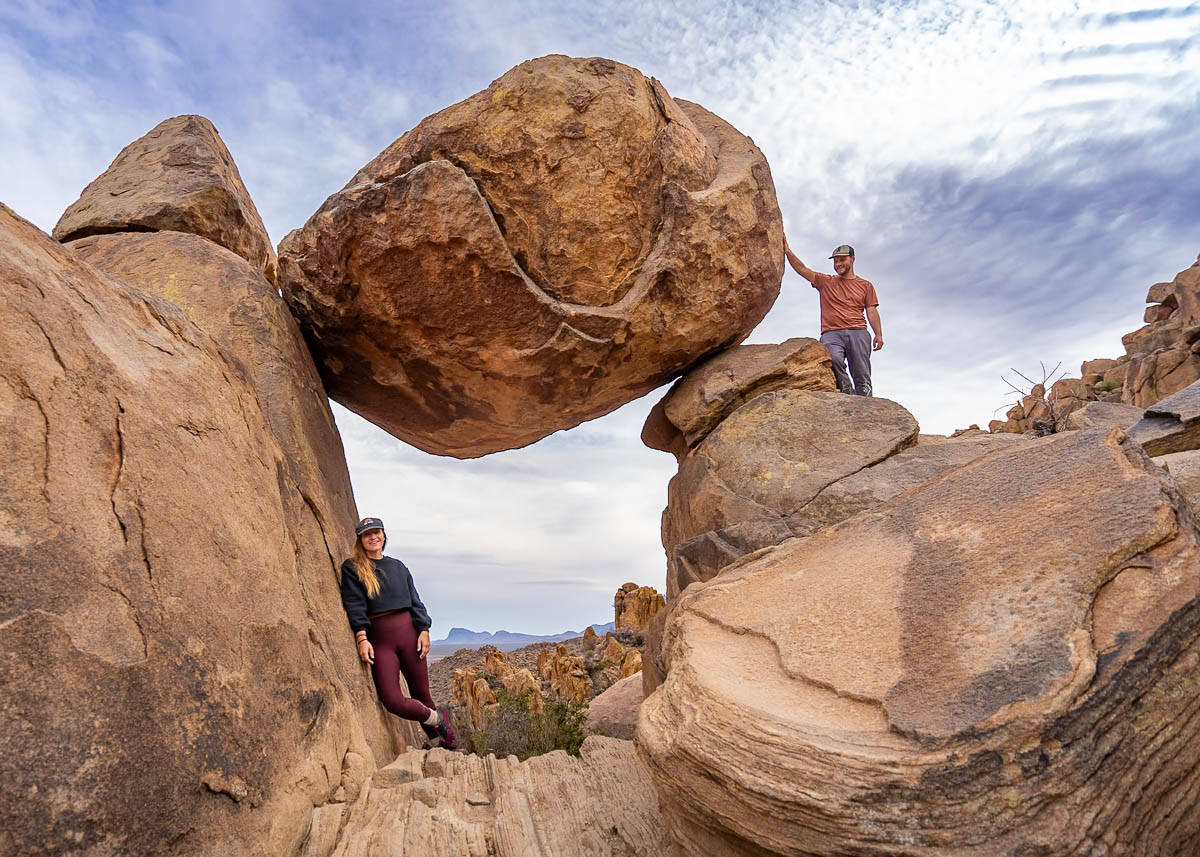
Pssst… looking for other cool hikes in Texas? Check out:
About the Balanced Rock Trail
- Length: 1.9 miles
- Elevation gain: 246 feet
- Difficulty: Easy to moderate. Most of this short trail is quite flat, although, towards the end of the hike, you’ll need to climb up a few steep hills and even scramble over some rocks to reach the Balanced Rock.
- Dog-friendly? No, like most U.S. National Park trails, you’ll need to leave your furry best friend at home for this one.
- Trail map
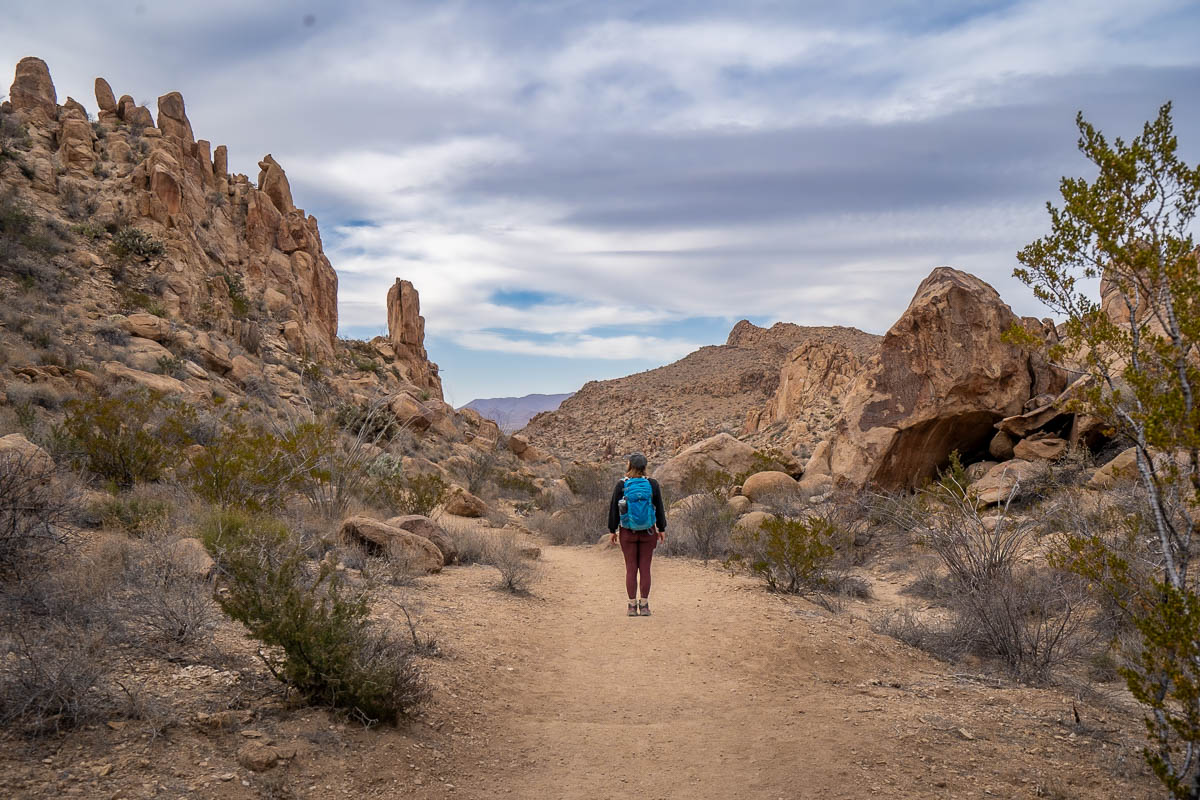
How to get to the Balanced Rock Trail
The Balanced Rock Trail is located here in the northern section of Big Bend National Park in west Texas. Big Bend is kind of located in the middle of nowhere—the closest big city is El Paso, Texas, located approximately five and a half hours (or 325 miles) north of the park.
The entrance fee to Big Bend is $30 per private vehicle for a week in the park. Alternatively, you can pick up an America the Beautiful Pass, which costs $80 and gets you unlimited access to all of the U.S. National Parks and over 2,000 federally managed sites for a whole year.
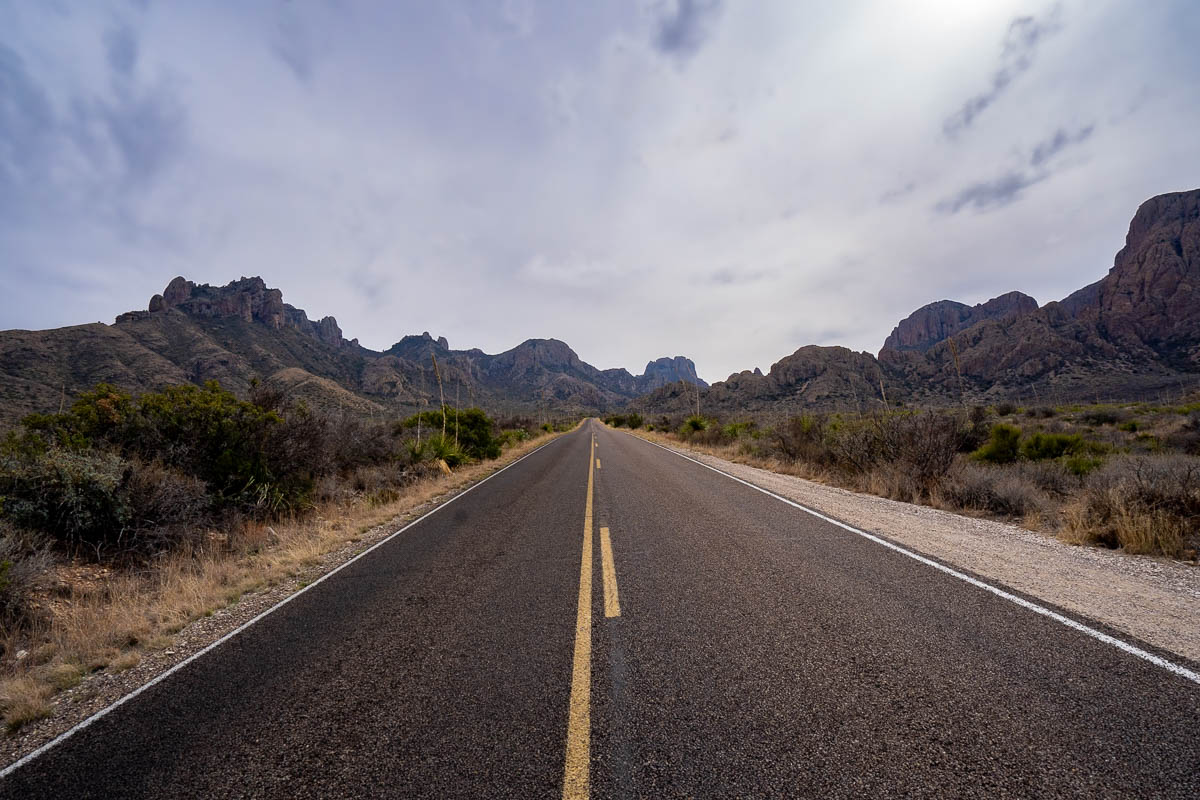
Once you’re in the park, most of the drive to the Balanced Rock trailhead is along a well-maintained route, until you get to the last six and a half miles along Grapevine Spring Road. This road is unpaved, with some pretty huge potholes, rugged rocks, and lots of washboarding.
The first five miles of the road would probably be doable in a standard passenger vehicle if you drive slowly, but the last mile and a half are definitely a DOOZY (at least when my husband, Justin, and I drove it in 2024). Accordingly, I’d generally only recommend driving to the trailhead parking lot with a high clearance vehicle—we didn’t see any standard passenger sedans in the parking lot when we did this hike.
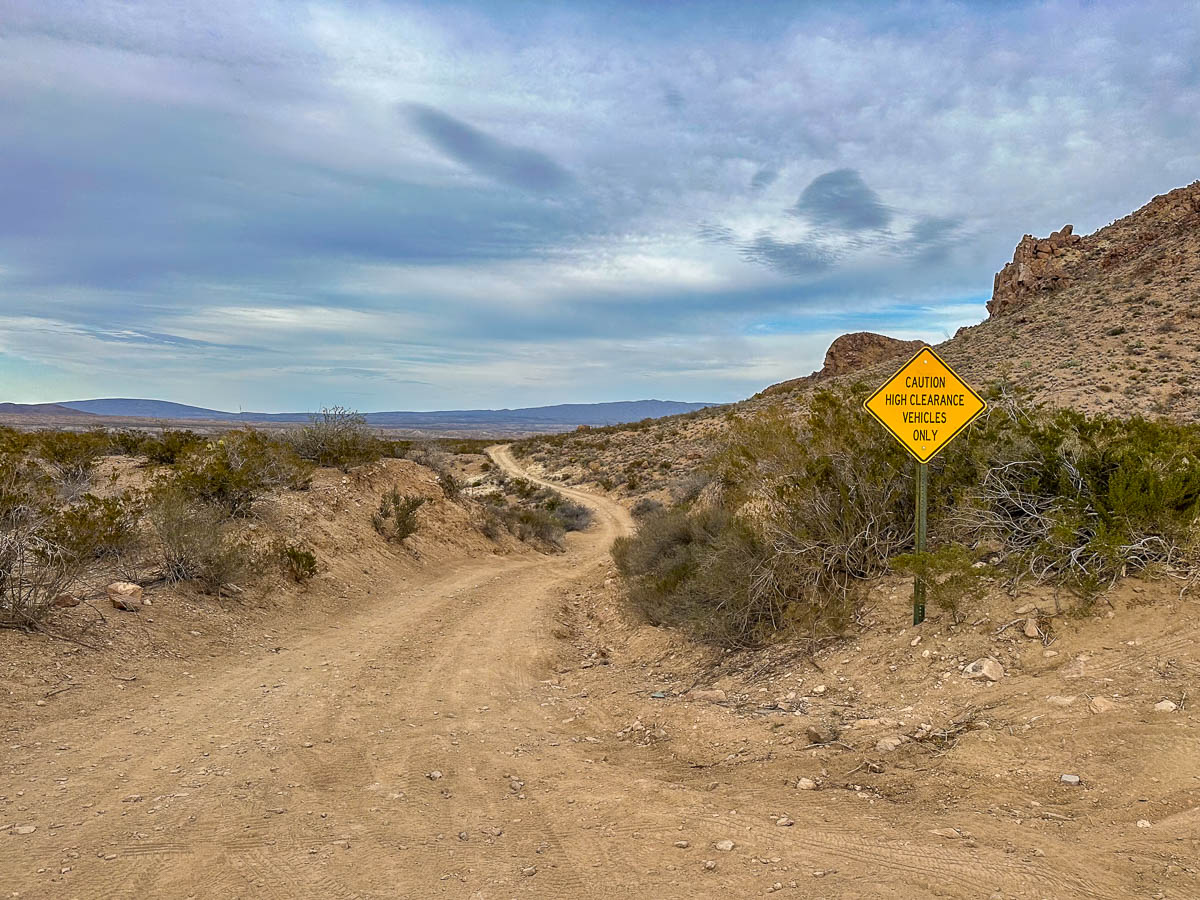
The conditions are supposed to get even worse during rainy periods, which is most common from July through September. If you’re planning on driving it during or after it’s recently rained, I’d suggest checking on the condition of the road at the Panther Junction Visitor Center to be on the safe side.
The parking area is small, but you usually should be able to snag a spot with no problem. Because of the rough road conditions, this trail sees much fewer visitors than it otherwise would. Plus, given how short the hike is, there’s always people coming and going, freeing up parking spaces.
Tip: If you don't think your car will be able to make it all the way to the Balanced Rock parking lot, there are a handful of pull-offs along the road before the road gets too bad around Mile 5, where you could theoretically leave your car and then walk the rest of the way to the trailhead.
Alternatively, there are SO many cool hikes in Big Bend to check out instead, including the Lost Mine Trail and the Window Trail.
What to expect along the Balanced Rock Trail
The first 0.8 miles of the trail are through a wide, sandy wash that leads gently uphill. I was surprised by how stunning this section of the trail is, with either side of the wash lined with enormous boulders and rocky spires jutting out of the Earth.

Pretty much all of the elevation gain is saved for the last quarter mile of the trail, where you’ll follow a series of metal signs up a rocky bedrock cliffside. The trail and even the signs can be a bit challenging to see, at times, so I’d suggest downloading an offline trail map on AllTrails so that you can follow along with GPS.
At times, there’s sections where you may have to use your hands to scramble up steeper sections, but it’s definitely doable for even newbie hikers.
That being said, I’d recommend wearing proper hiking boots, as opposed to sneakers or sandals, to provide a bit more traction and support while you’re climbing. Justin has used this pair of hiking boots for years and here‘s the kind I use.
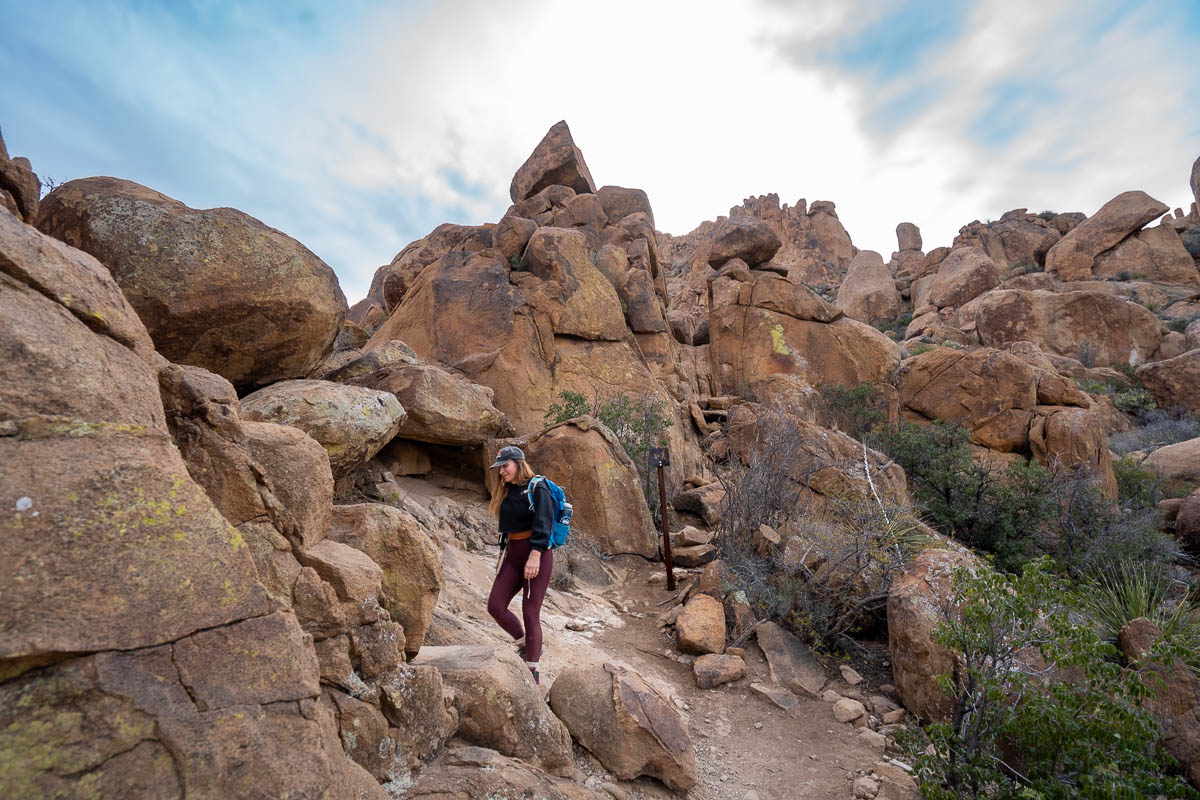
Finally, Balanced Rock will come into view, with seemingly endless photo opportunities (we OBVIOUSLY needed to get some with Justin “lifting” the rock!). Be sure to hike under the rock itself and peer over the cliffside—you get an epic view of the surrounding rock formations and, in the distance, Nugent Mountain.
When to hike the Balanced Rock Trail
The best time to hike the Balanced Rock Trail is from October through March, given the extremely hot weather that Big Bend experiences in the warmer months.
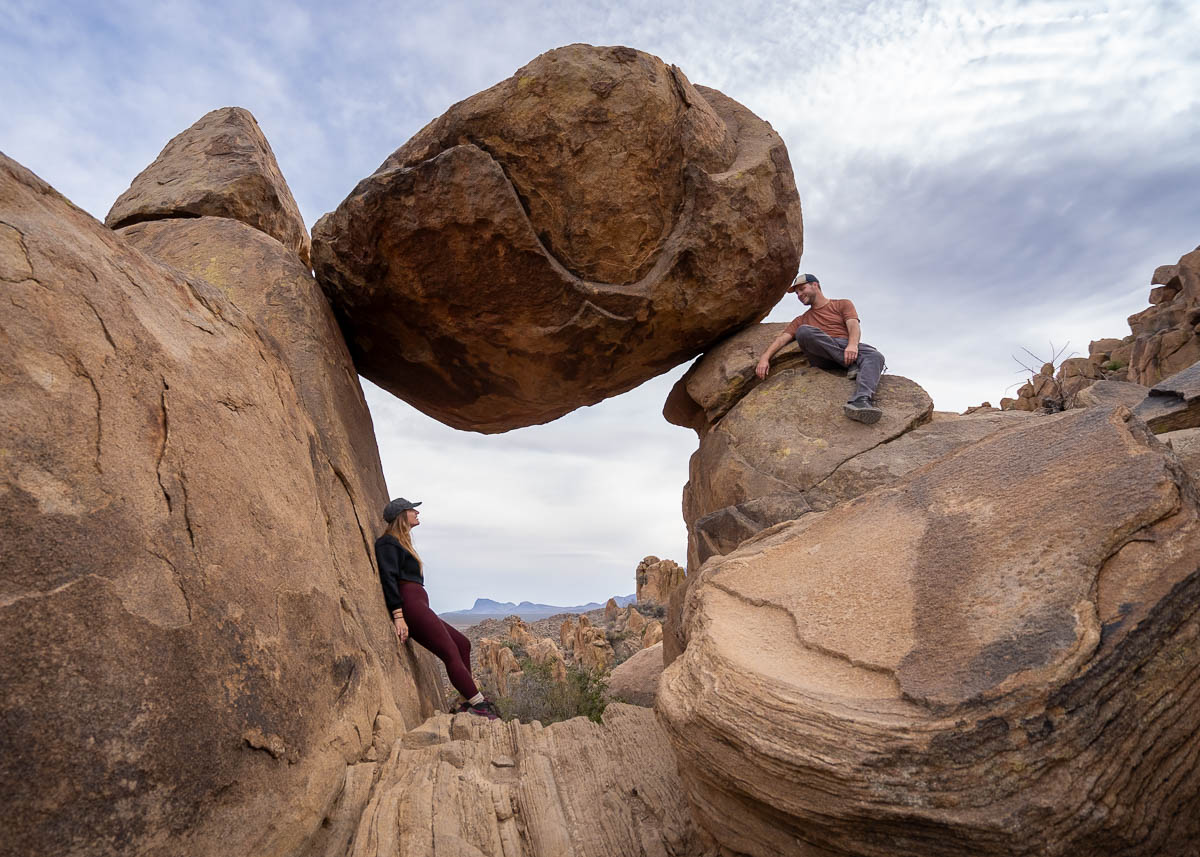
My husband, Justin, and I hiked the Balanced Rock Trail in March and, while we lucked out with a gloriously pleasant day, the following days in Big Bend had temperatures exceeding 95 degrees! So, even if you happen to be visiting during the “cooler” months, be sure to check the forecast before your visit so that you can be prepared for the weather.
In our opinion, mid-March is actually the best time to visit Big Bend, thanks to the colorful springtime blooms that line its hiking trails and *usually* pleasant weather. We visited Big Bend towards the beginning of March and were just starting to see the first hints of wildflowers along the trail.
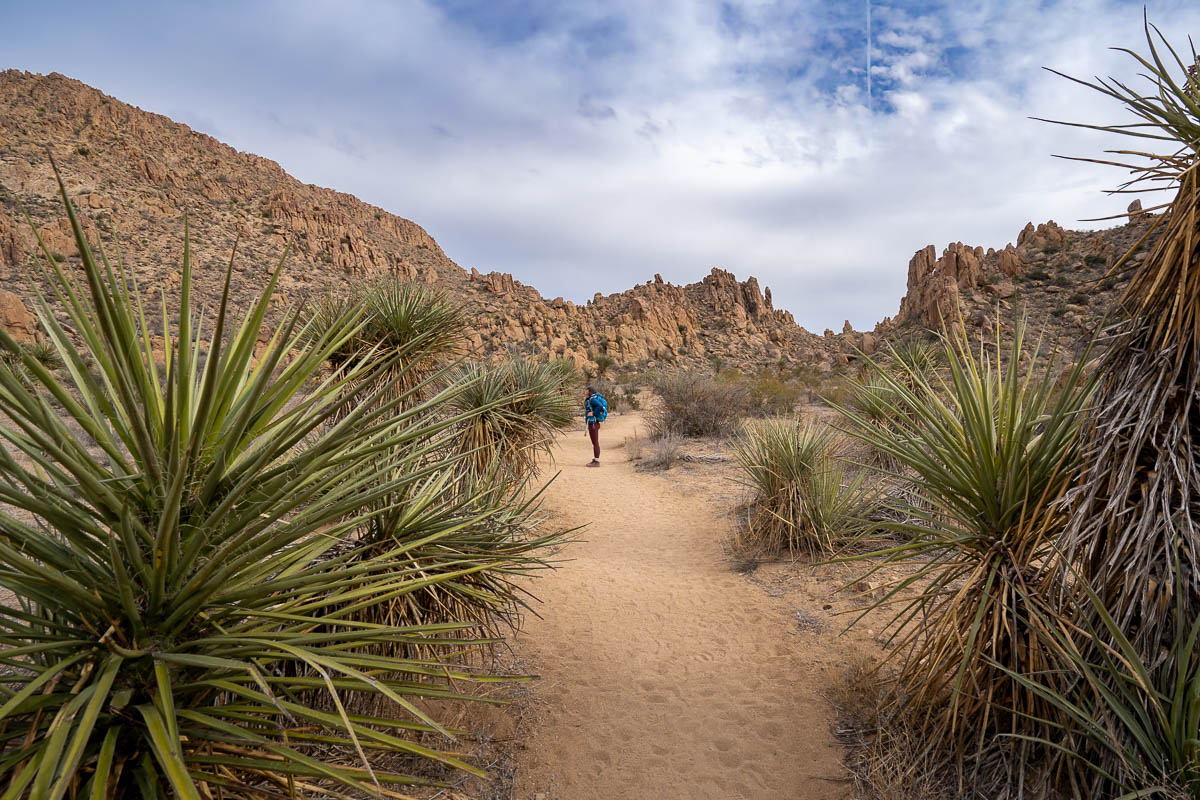
Tips for the Balanced Rock Trail
Be careful of where you put your feet and hands
Keep an eye on the trail and where you put your hands while you’re climbing up to Balanced Rock.
Big Bend is home to 31 species of snakes, a handful of which are actually venomous—many of which like to hang out in the protected shady spots of the park’s rockier sections. Bites are extremely rare, but snakes can attack if they’re startled or frightened, which may happen if you accidentally kick or touch them.
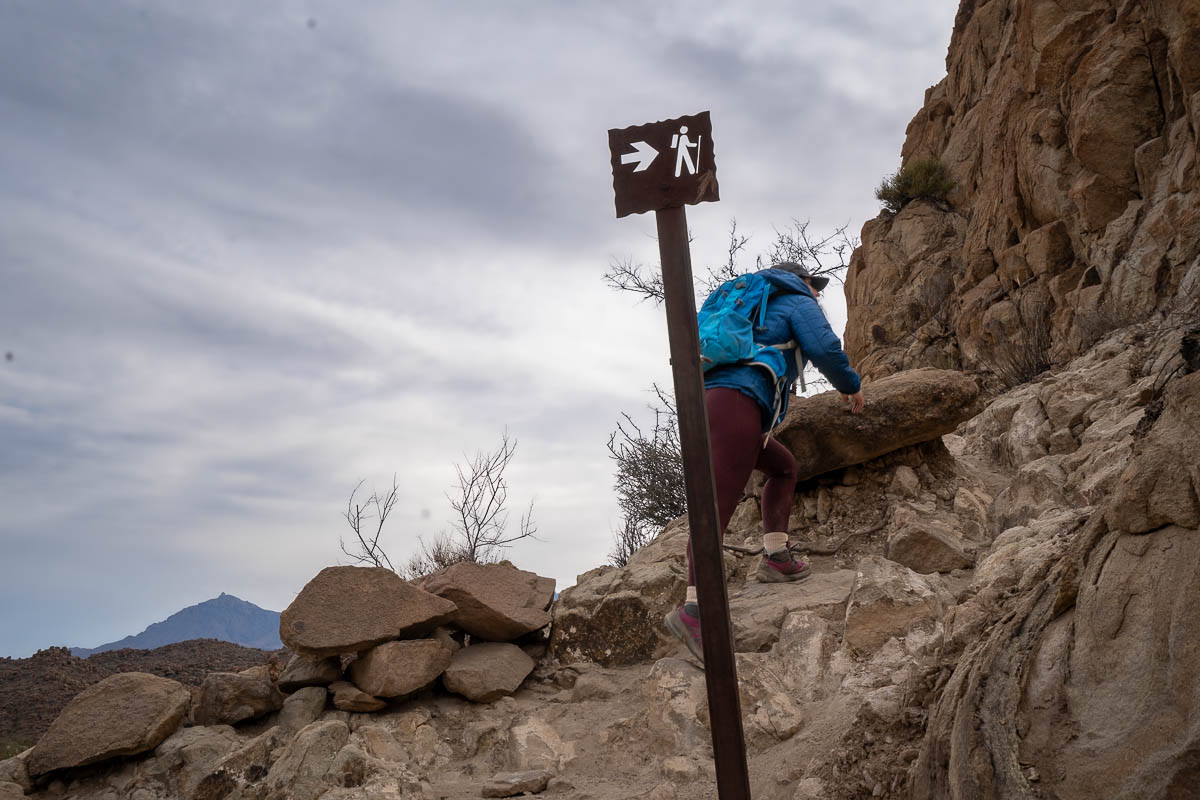
Time your hike
If you visit during the summertime, I’d recommend getting here on the early side, as the trail can get dangerously hot as the day continues.
If you’re visiting during the cooler months, I’d suggest trying to time your visit with sunset–the orange glow over the Grapevine Hills to the south is absolutely stunning!
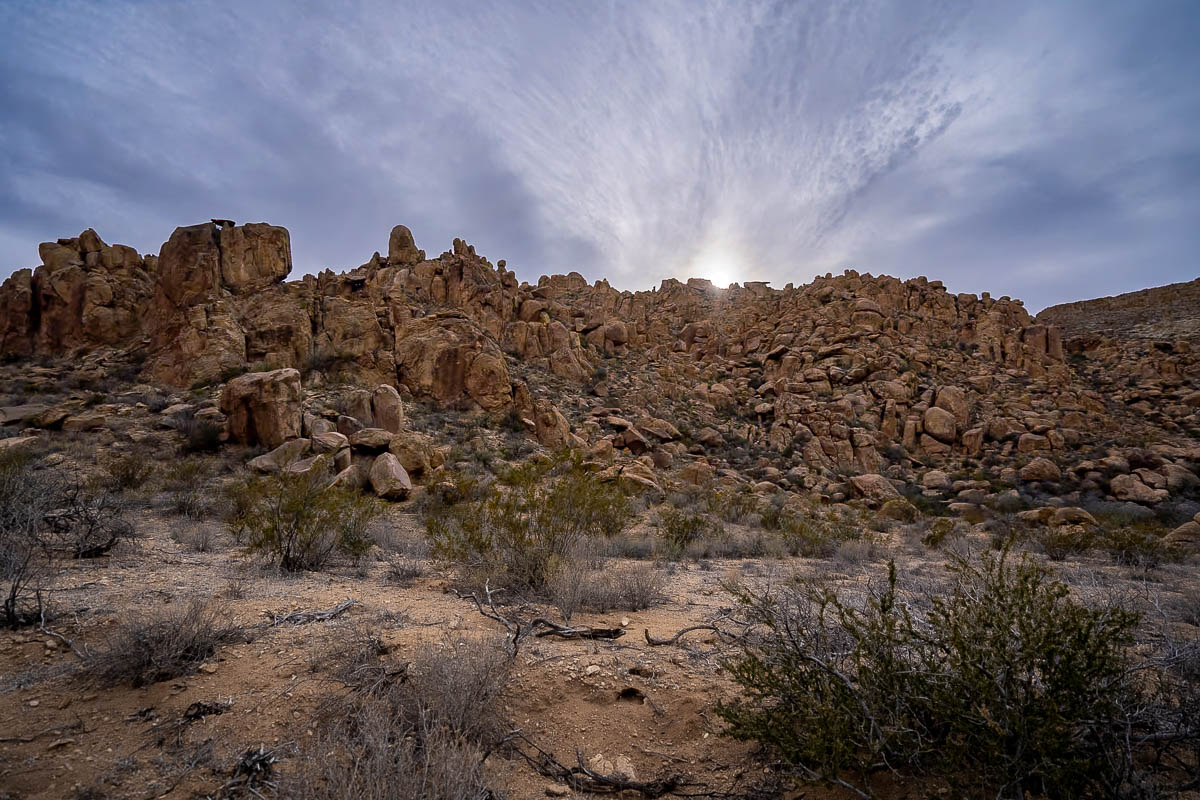
Plus, if you’re an astrophotography enthusiast like us, the Balanced Rock is a great place to capture Big Bend’s stunning night sky once the sun goes down. Stargazing is actually one of the most popular things to do in Big Bend—it actually boasts the least light pollution out of any of the U.S. National Parks in the Lower 48 and is an International Dark Sky Reserve, with over two thousand visible stars!
Just make sure to bring along a headlamp to help you make it back to the parking lot safely.
We LOVED the Balanced Rock Trail—it was definitely one of our favorite hikes in Big Bend and I hope you enjoy it as much as we did! Do you have any questions about this trail? Let us know in the comments below!

